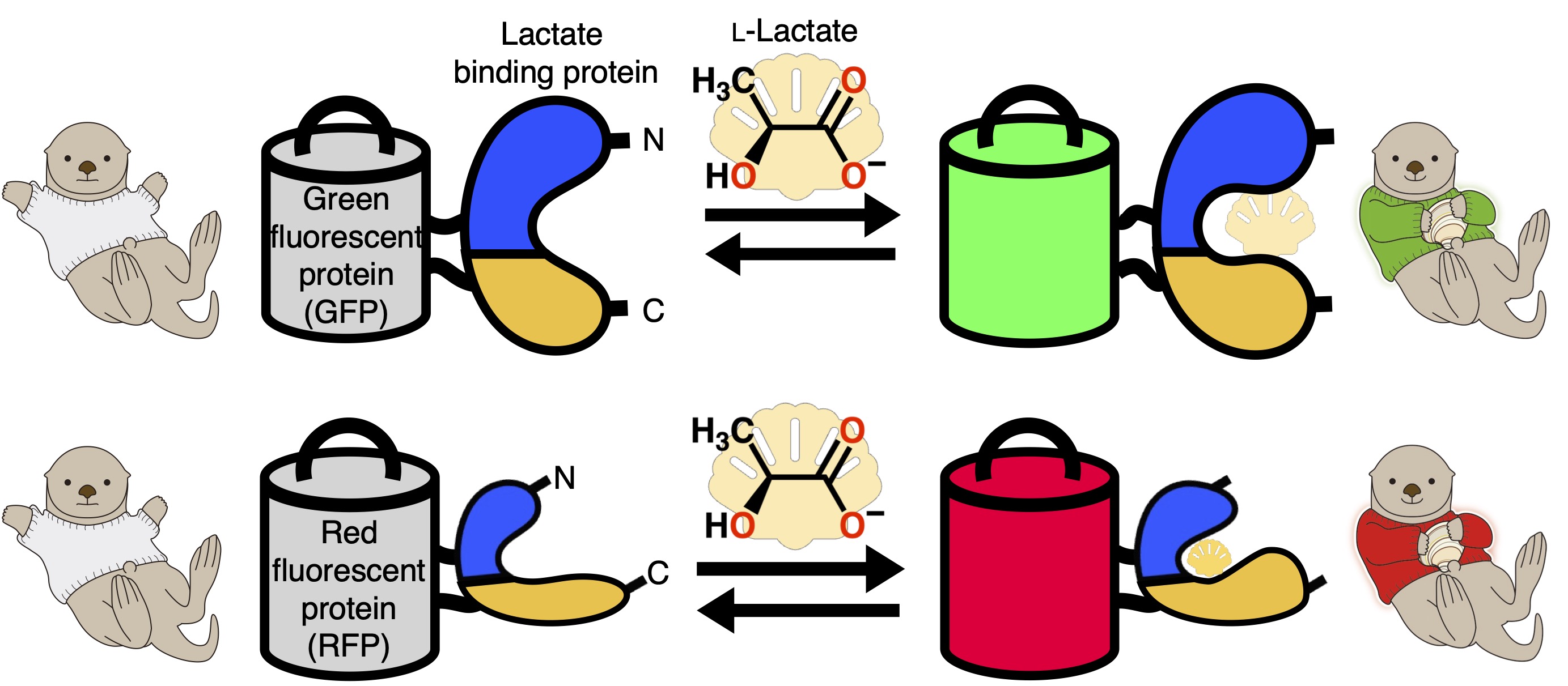DATE2023.10.27 #Press Releases
UTokyo scientists visualize lactic acid in living animal brains
The finding highlights that lactic acid could be a vital energy source for brain activities, overturning the idea that it is merely a metabolic byproduct of glucose.
Oct 27, 2023
The University of Tokyo researchers Yusuke Nasu and Robert Campbell, with their international collaborators, have invented the world’s most sensitive lactic acid (lactate) sensors to capture lactate dynamics inside and outside living brain cells.
L-Lactate or lactic acid is a metabolic byproduct that can also act as a signaling molecule in the nervous and immune systems. Glucose is an energy source for nerve cells. However, recent studies hint that lactate could be another energy source—not just a metabolic byproduct of glucose.
To verify the speculation, scientists must observe the dynamics of lactic acid inside and outside nerve cells in the living mammalian brain. But the current tools lacked the sensitivity to quantify lactate in living cells. The team headed by Professor Robert Campbell and Assistant Professor Yusuke Nasu used protein engineering to create two different genetically encoded sensors: a green and a red fluorescent biosensor.
The red fluorescent biosensor can monitor the lactate concentration change inside the neurons, while the green one can monitor outside the neurons. Depending on the amount of lactate, these sensors fluoresce in different colors, thus indicating how lactate changes in the brain cells as the living mice perform various activities.
The researchers could confirm their observations in living mice brains and lab-cultured mammalian cells. With minimal invasiveness and high resolution, these sensors are the world’s most sensitive lactate sensors yet. The findings will now make it easier to show the importance of lactate as a source of energy for brain activities.

Figure: Schematic illustration of the lactate biosensors, designated eLACCO2.1 (upper) and R-iLACCO1 (bottom). These biosensors change their fluorescence intensities in an L-lactate dependent manner.
The findings were published in the journal Nature Communications.
Nasu Y., Aggarwal A., Le GNT, Vo CT, Kambe Y., Wang X., Beinlich FRM, Lee AB, Ram TR, Wang F., Gorzo KA, Kamijo Y., Boisvert M., Nishinami S., Kawamura G., Ozawa T., Toda H., Gordon GR, Ge S., Hirase H., Nedergaard M., Paquet M.-E., Drobizhev M., Podgorski K., Campbell RE. Lactate biosensors for spectrally and spatially multiplexed fluorescence imaging. Nature Communications. DOI: 10.1038/s41467-023-42230-5


